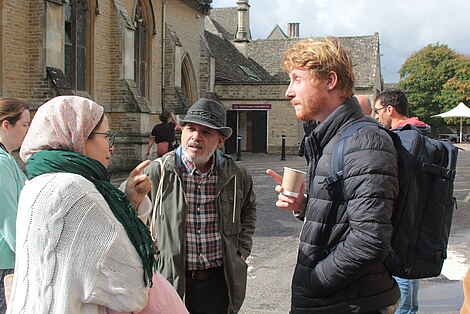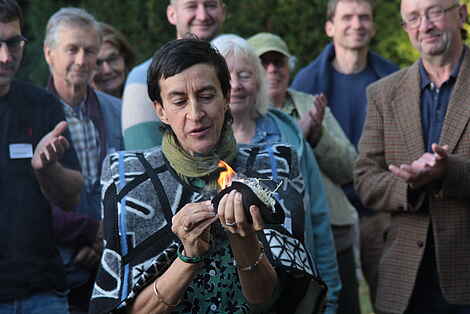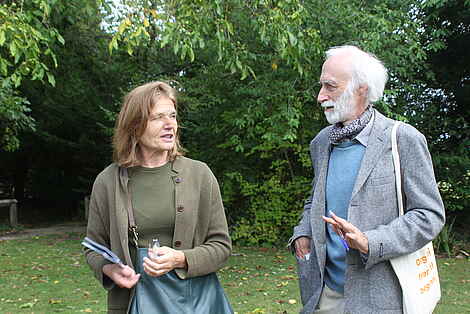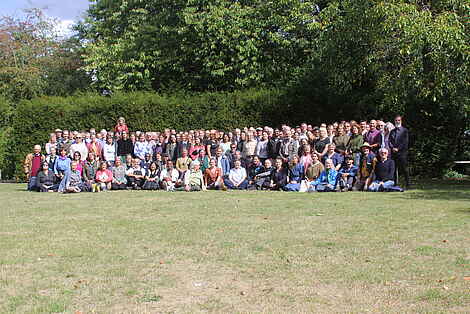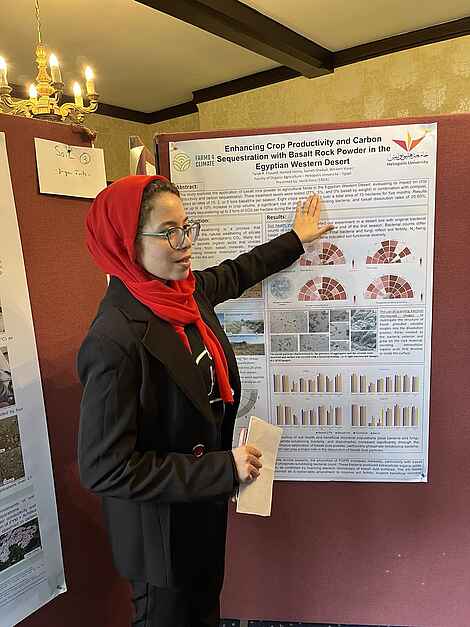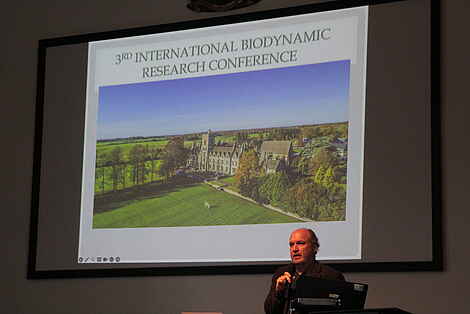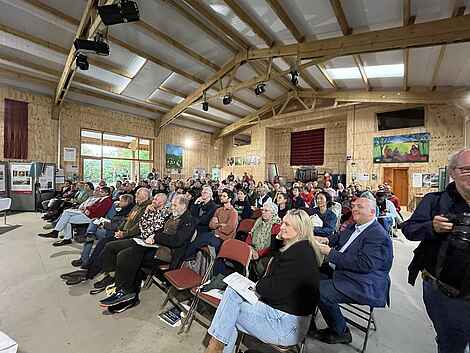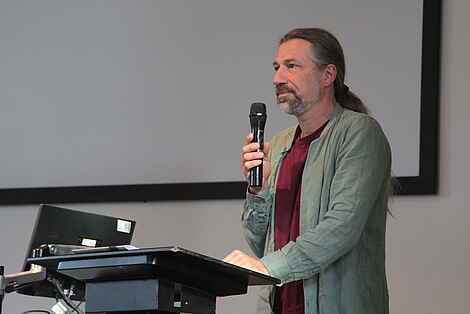From 31 August to 4 September 2025, 185 participants from 28 countries gathered at the Royal Agricultural University in Cirencester to present current research results and discuss questions in biodynamic research. Among them were representatives from science, practice, business, advisory services, and education. A total of 67 contributions were presented – a diverse program that impressively reflected the breadth of disciplines and approaches.
The atmosphere was consistently positive, festive, and inspired by pioneering spirit. Thanks to excellent organization, everything ran smoothly, allowing participants to focus fully on substantive exchange. Interaction was respectful, open, and constructive. Even where potential for conflict existed – for example, in the debate on how to deal with hybrid seed – a productive dialogue unfolded. The level of conversation was high, marked by personal dedication and objectivity both in presenting and in listening.
The conference made it clear that biodynamic research is by no means lagging behind. On the contrary, it plays a pioneering role – especially with regard to transdisciplinarity and diversity. Today, biodynamic research is both internationally connected and thematically wide-ranging.
Four main themes shaped the conference and reflected the pulse of the times: microbiome research – especially in connection with the preparations, contributions from the social sciences, the timeless question of biodynamic quality, and engagement with diverse research methods.
Each day of the conference began with a double lecture: first a researcher, then a practitioner took the stage.
On the opening day, Julia Wright, a researcher at Coventry University near Cirencester, refuted the recurring accusations of pseudoscience directed at biodynamics. She was followed by Binita Shah, who provided insights into the growing development of biodynamics in India.
The second day was dedicated entirely to interdisciplinarity. Eduardo Rincón, Co-Head of the Agriculture Section, used his own biography to illustrate the diversity of research approaches – ranging from scientific to artistic. David Martin, pediatrician and professor at the University of Witten/Herdecke, concluded his lecture with a passionate plea for the importance of connecting people, nature, and agriculture for human health. He himself sets an example by helping to develop an agro-medical training program at the biodynamic Dottenfelderhof near Frankfurt.
On the third and final day, the French researcher Cyrille Rigolot brilliantly unfolded the concept of transdisciplinarity, explaining its origins and its central importance for open, future-oriented agricultural research. In short: researchers are part of the systems they study – the ideal of the neutral, external observer has become obsolete. His Indian colleague Regina S. Dass from Pondicherry University presented her work supporting biodynamic coffee cultivation by Dalit communities in the forests of India. As a microbiologist, she is developing new approaches to adapt biodynamic preparations to local conditions.
Beyond the keynote lectures, the three days of the conference offered a wide range of workshops and presentations that, through their thematic and methodological diversity, vividly demonstrated the vitality and innovative strength of the biodynamic movement.
Several additional events provided special highlights. The visit to Ruskin Mill, an institution that integrates young people into society through work with the land and traditional crafts, deeply impressed participants with its relevance and scale: each year, more than 550 young people are supported there, assisted by around 1,300 staff across 16 centers throughout the United Kingdom.
We can look back on a successful conference that fostered international networking and respectful dialogue across disciplines and approaches. The Third International Biodynamic Research Conference – jointly organized by the Forschungsring, the Biodynamic Federation Demeter International, the Biodynamic Association UK, and the Section for Agriculture at the Goetheanum – showed clearly: biodynamic research is today setting important impulses for the agriculture of the future.


